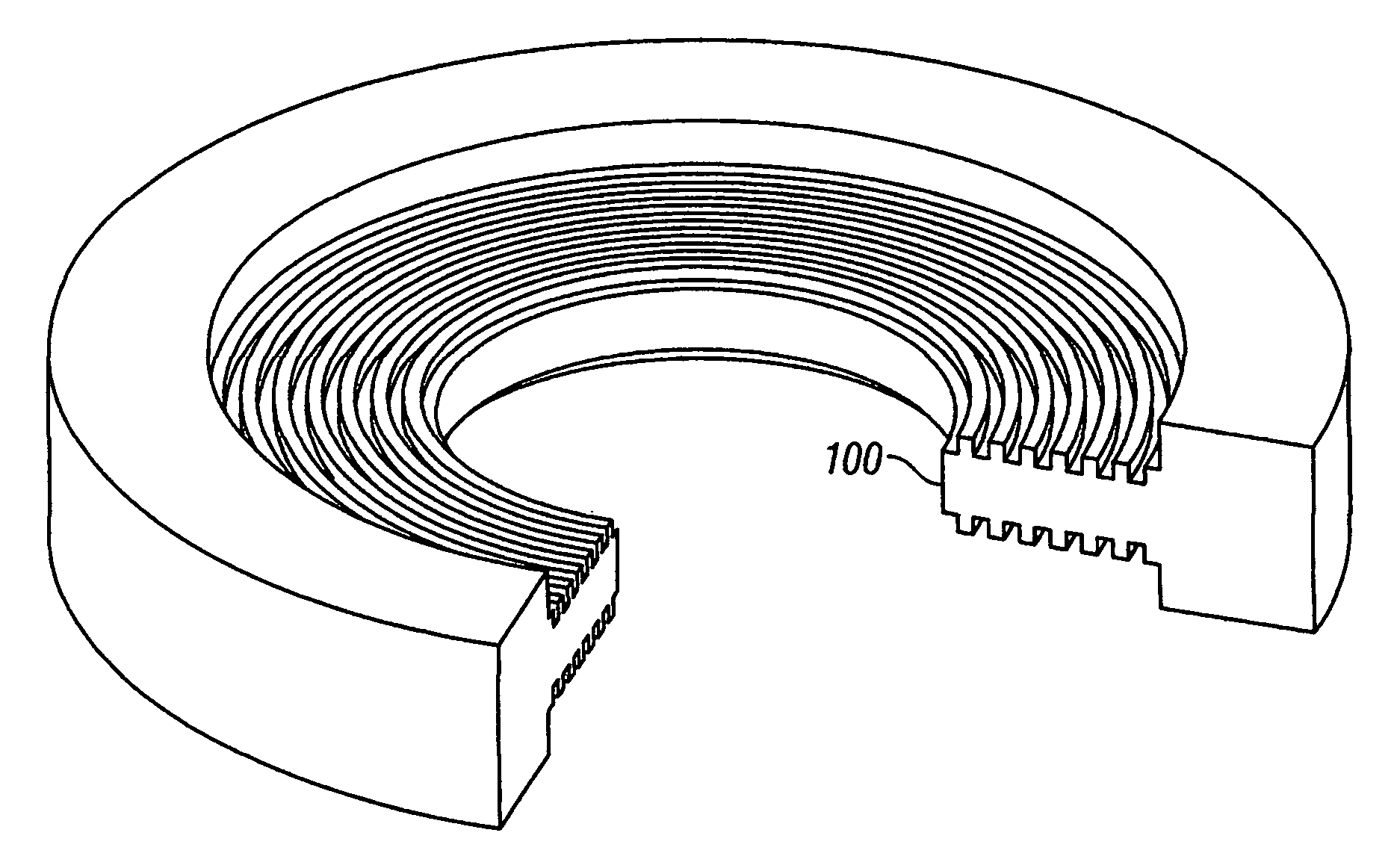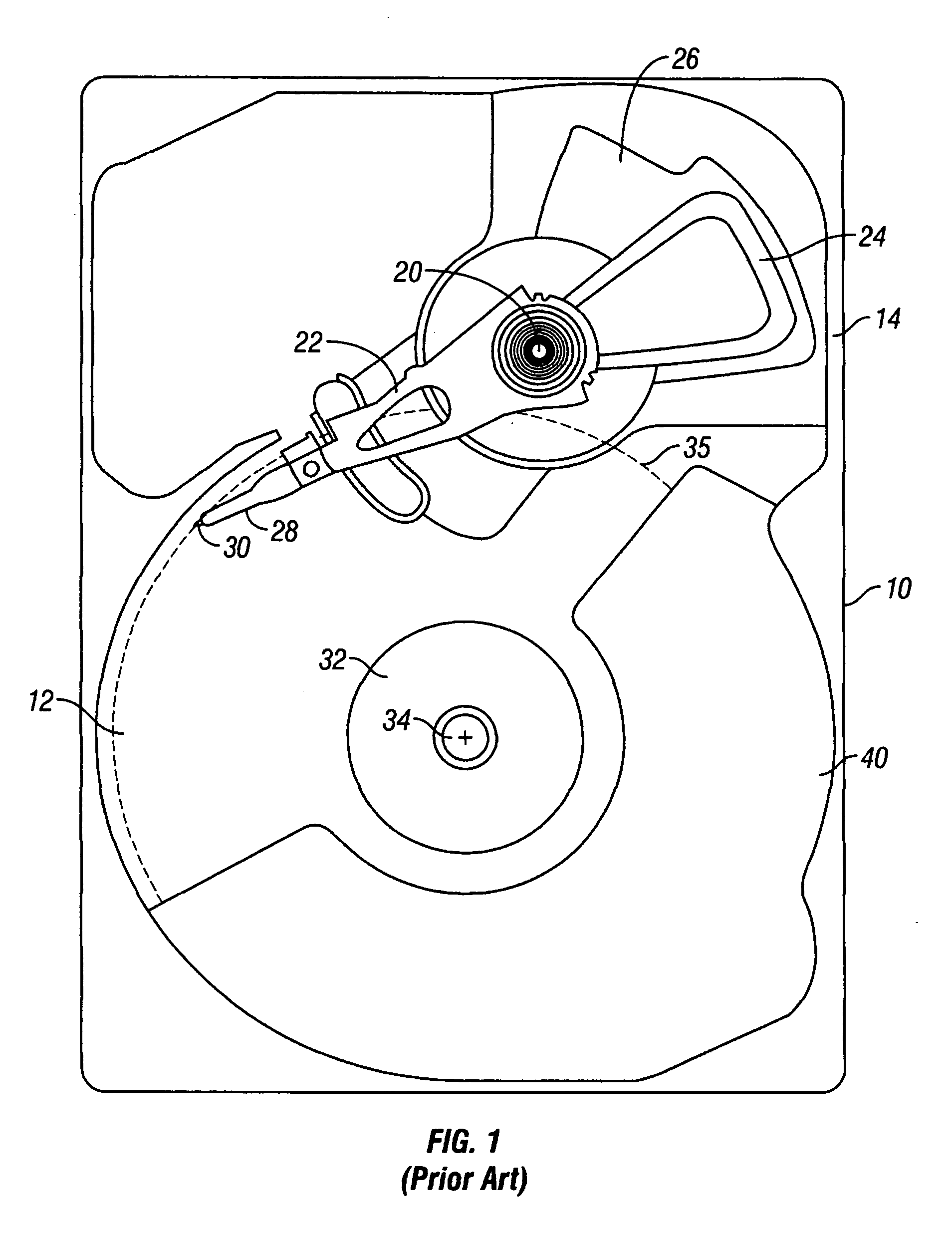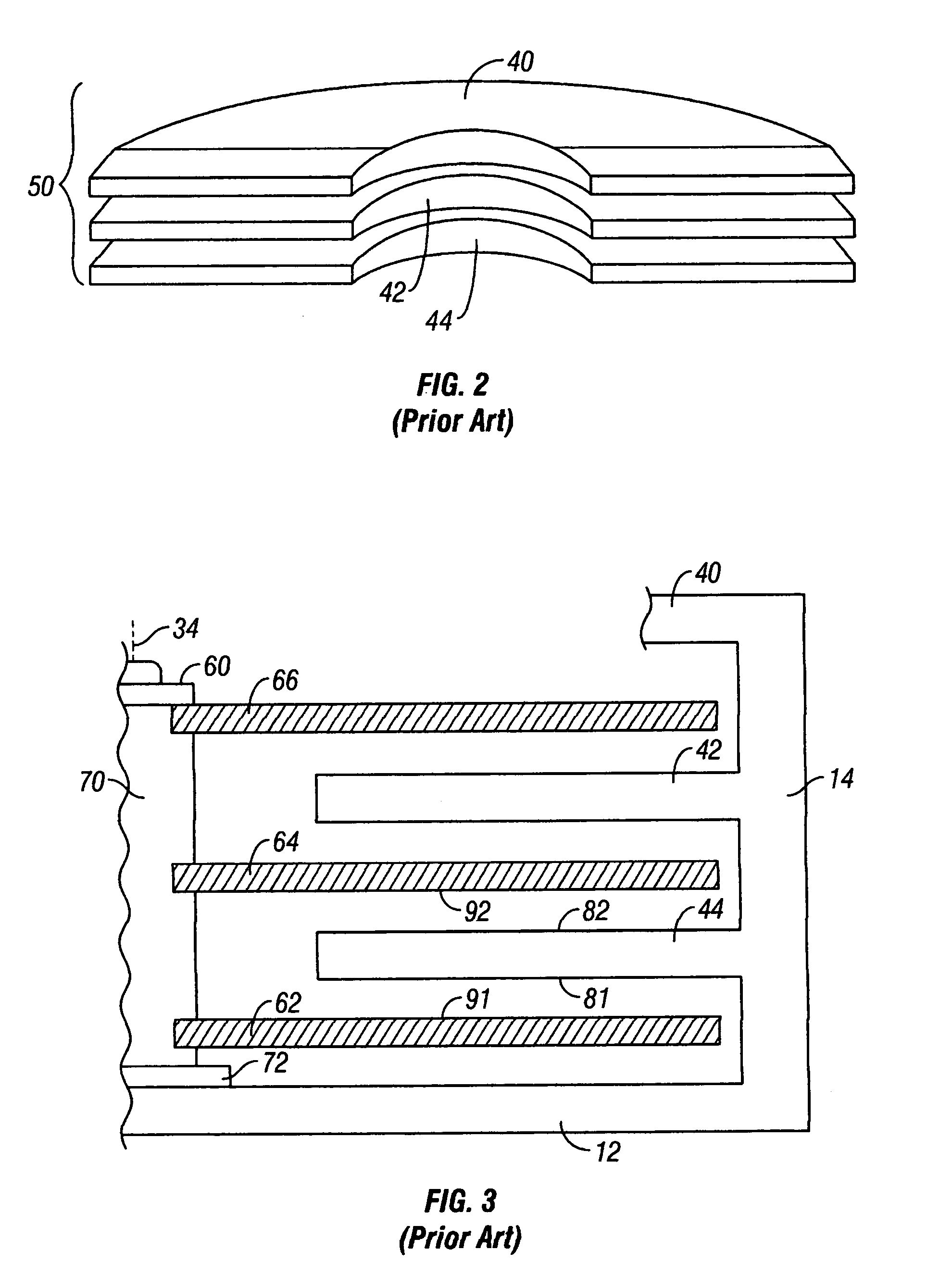Data recording disk drive with nonplanar plate surfaces for damping out-of-plane disk vibration
a technology of data recording disk and non-plane surface, which is applied in the direction of recording information storage, maintaining head carrier alignment, instruments, etc., can solve the cost of significantly increasing the torque of the spindle motor to rotate the disk stack, and achieve steady laminar air flow, reduce the torque of the spindle motor, and reduce the effect of viscous shear forces
- Summary
- Abstract
- Description
- Claims
- Application Information
AI Technical Summary
Benefits of technology
Problems solved by technology
Method used
Image
Examples
first embodiment
[0020]FIG. 4A is a perspective view and FIG. 4B a cross-sectional view of a damping plate 100 according to the present invention. Each of the two surfaces 102, 104 is a plurality of radially-spaced concentric grooves 110 separated by radially-spaced ribs 112. The grooves are depicted as being equally radially spaced, with each groove having a radial width wG and each rib a radial width wR. This design simplifies simulation of the air flow dynamics by selecting the ratio wG / wR to be one of the design variables. However, the advantages of the present invention are also achievable if the grooves are not equally radially-spaced and if the grooves do not all have the same depth or radial width. While the grooves in FIGS. 4A-4B have generally rectangular cross-sectional shapes, they may have other shapes, such as triangular, semicircular, etc.
[0021]FIG. 5 is a sectional view of the damping plate of FIGS. 4A-4B and a portion of its two associated axially-spaced disks 200, 250. Disk 200 has...
second embodiment
[0025]FIGS. 6A-6B illustrate a perspective view and cross-sectional view, respectively, of the damping plate in which the nonplanar surfaces have discrete surface features. The damping plate 300 has nonplanar surfaces 302, 304, each of which is a pattern of radially-spaced depressions or dimples arranged in concentric rings around plate 300. Each dimple has a shape with a circular perimeter, but the shape can take other forms, such as elliptical, hexagonal, etc. The dimples can have a depth approximately that of the grooves in the embodiment of FIGS. 4A-4B, i.e. 0.2 mm. Also, the surface features can be protuberances or bumps, instead of dimples. The bumps can have a height approximately that of the grooves in the embodiment of FIGS. 4A-4B, i.e. 0.2 mm. While the surface features are shown in FIGS. 6A-6B as patterned in concentric rings around the plate, they need not be located in such a pattern. However, it is believed that this pattern provides concentric rings of substantially p...
third embodiment
[0026]FIGS. 7A-7B illustrate a perspective view and cross-sectional view, respectively, of the damping plate. The damping plate 400 has nonplanar surfaces 402, 404, each of which is section of a conical surface. As shown by FIG. 7B the axial spacing S between each damping plate surface and its corresponding planar disk surface, such as between nonplanar surface 402 and planar surface 410 of disk 408, varies linearly (increasing or decreasing) in the radial direction r of the plate.
[0027] The invention has been described with application to a magnetic recording hard disk drive, but the invention is fully applicable to any data recording disk drive with hard disks, such as disk drives that read and / or write by one or more of magnetic, optical, thermo-magnetic and magneto-optic techniques.
PUM
 Login to View More
Login to View More Abstract
Description
Claims
Application Information
 Login to View More
Login to View More - R&D
- Intellectual Property
- Life Sciences
- Materials
- Tech Scout
- Unparalleled Data Quality
- Higher Quality Content
- 60% Fewer Hallucinations
Browse by: Latest US Patents, China's latest patents, Technical Efficacy Thesaurus, Application Domain, Technology Topic, Popular Technical Reports.
© 2025 PatSnap. All rights reserved.Legal|Privacy policy|Modern Slavery Act Transparency Statement|Sitemap|About US| Contact US: help@patsnap.com



